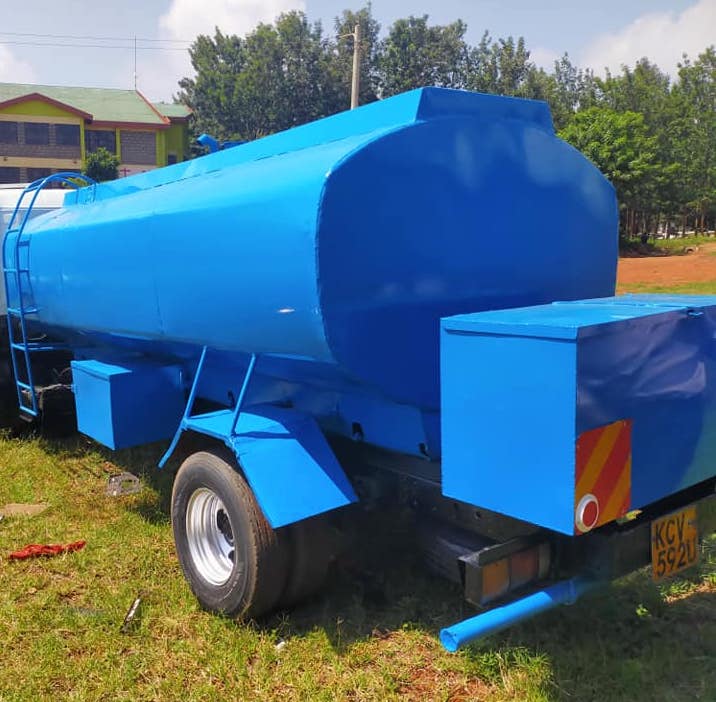For Clean water bowser in kileleshwa Lavington Loresho Hurlingham Karen price near me CALL 0721155332

The process of making water safe to drink or use for other purposes involves eliminating pollutants and impurities. An outline of the phases in the water purification process is provided below:
Examining
The goal is to remove big material, such as leaves, sticks, and trash.
Method: Larger particles are filtered out of water by means of metal screens or grids.
The goal of flocculation and coagulation is to eliminate suspended particles.
Coagulation: When substances like alum (aluminum sulfate) are introduced to water, tiny particles congregate to form bigger particles known as “flocs.”
Slowly swirling the water promotes flocculation, which makes the flocs bigger.
Sedimentation used by bulk water suppliers in Nairobi
Purpose: Allow flocs to settle at the bottom.
Process: The water flows into sedimentation tanks where gravity causes the flocs to settle, forming a sludge layer that is removed.
Filtration for Clean water bowser in kileleshwa
Purpose: Remove smaller particles and remaining impurities.
Process: The water is filtered through layers of sand, gravel, and sometimes activated carbon. This process removes remaining suspended particles, bacteria, and some chemicals.
Disinfection
Purpose: Kill harmful microorganisms (bacteria, viruses, parasites).
Process: Chlorine, chloramine, or other disinfectants like ozone or UV light are added to the water. This step ensures that any remaining pathogens are eliminated.
pH Modification
Goal: Make sure the pH of the water is neutral for safe drinking.
Procedure: To change the pH level, chemicals such as sodium carbonate or lime (calcium oxide) are applied.
Fluoridation (Selective)
The goal is to stop tooth decay.
Method: To improve dental health, fluoride is sometimes added to water supplies.
The goal of storage and distribution is to keep the cleansed water in reserve until customers require it.
Procedure: After being purified, water is pumped into homes and businesses via pipelines after being kept in reservoirs or water towers.
Quality Testing for Clean water bowser in kileleshwa Lavington Loresho Hurlingham Karen price
Purpose: Ensure safety and compliance with health standards.
Process: Water is regularly tested for contaminants, including bacteria, chemicals, and heavy metals, to ensure it meets safety standards.
Each of these steps is critical in ensuring that the water is clean, safe, and pleasant to drink. The specific processes and chemicals used can vary depending on the source of the water and the quality standards required.